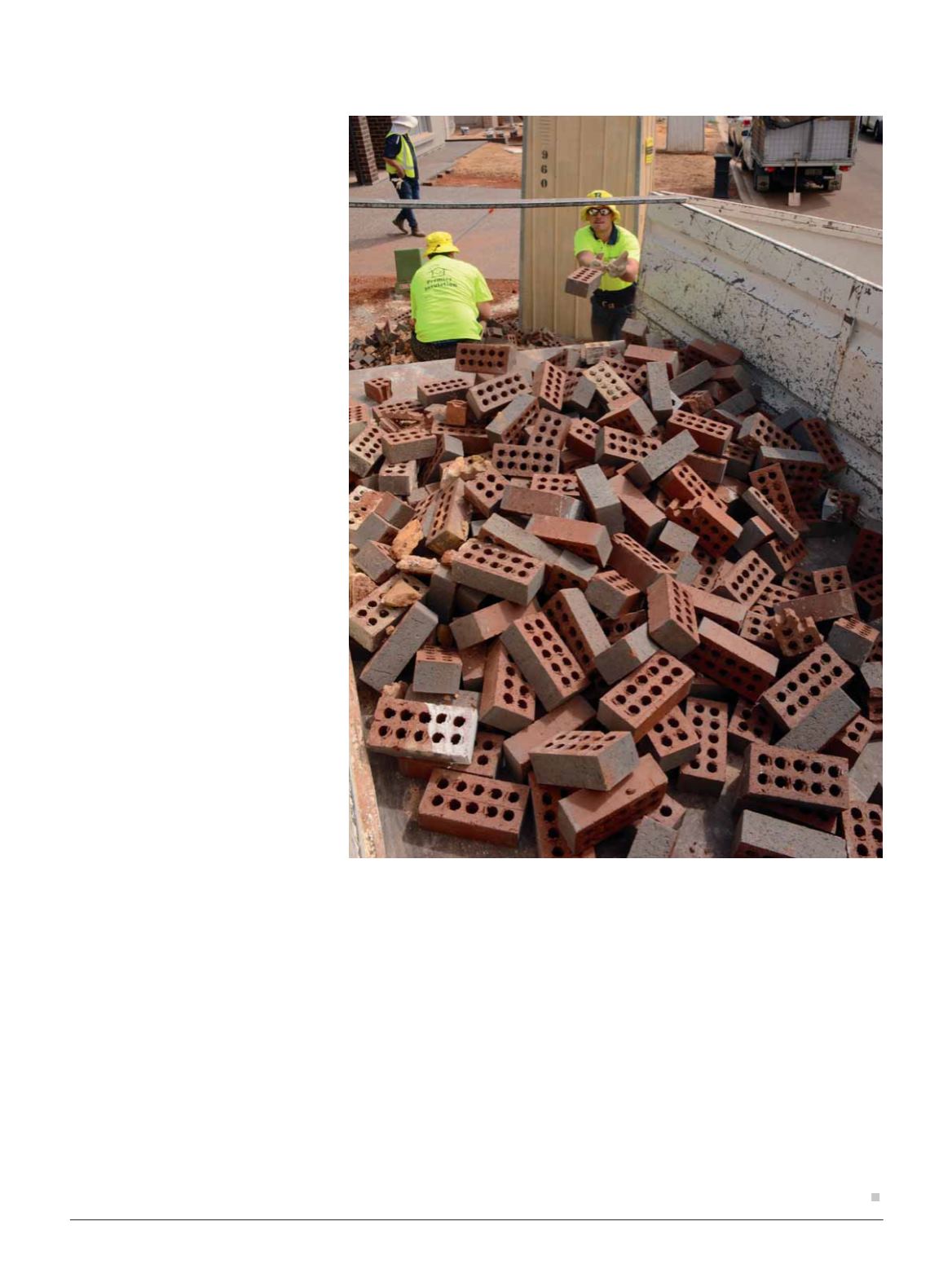
 www.buildingconnection.com.au
www.buildingconnection.com.au
3 3
of the effect they can have on the
environment.
“The positives to moving forward in
a sustainable way are that it breeds
forward-thinking. Society is at a point of
wanting change and each industry must
follow. The benefits fall back into your
pocket,” he says.
So how exactly does it work?
From, once upon a time, seeing skips
full of off-cuts destined for a dump
site, the range of uses for repurposed
material is almost limitless.
“Through six stages of a worksite
clean, we minimise landfill, site
hazards, and CO2 emissions,” says
Ben, explaining that they identify the
important, waste-heavy stages of the
building process. At the end of these
stages, contractors are instructed to
leave off-cuts in a designated area to be
collected by Precycle within 48 hours of
job completion.
“At each stage we do an entire site
clean and feather the bin for any excess
of un-contaminated recyclables.”
Precycle takes timber, bricks, steel,
REO, plastics, concrete and anything
else that could be repurposed. As long
as the material is not contaminated,
Precycle will take it.
It can then be recycled into a wide
variety of items.
“In terms of how the materials are
repurposed, that is completely up to
the body who takes it. For example,
plasterboard is crushed and mixed into
soil. A lot of our timber off-cuts are
being sent to high schools to help future
makers. We are open to anyone who
is willing to reuse our materials in an
environmentally positive way.”
As a model, Precycle is the first of its
kind. Ben says they pride themselves
not only on being environmentally
positive but also on creating a safe
environment for each worksite, and
he believes it is why builders should
consider using a system like Precycle.
“At the end of the day, we help to
facilitate an organised, well maintained
work site. It is not just the practice of
recycling materials that is beneficial; it
is having someone that is responsible
across the board, for the entire build.”
Precycle, he says, removes the need
for labour in cleaning sites as they make
sure the sites are maintained to the
highest order, helping to reduce waste
and material costs.
“Long term relationships mean we
have an understanding of builders’
ordering practices.”
And this knowledge subsequently
leads into creating a more sustainable
process in the building industry,
says Ben who points out that being
an environmentally positive and
sustainable builder has its difficulties.
“Waste is an enormous part of
that. Previously, there were no real
alternatives to the current model of
dumping everything into a skip and
forgetting about it.”
But Precycle is not just about
dumping in an environmentally friendly
way; it’s about reducing the amount
of resources being used from the very
beginning.
“If we can create a circular economy
in the building industry, we can give
back to builders whether it’s materials
they haven’t used, or giving them
an understanding of what they have
consistently over-ordered,” says Ben.
Not only does Precycle’s model encourage recycling, it also creates a cleaner, safer
work environment for everyone working on the jobsite.
















